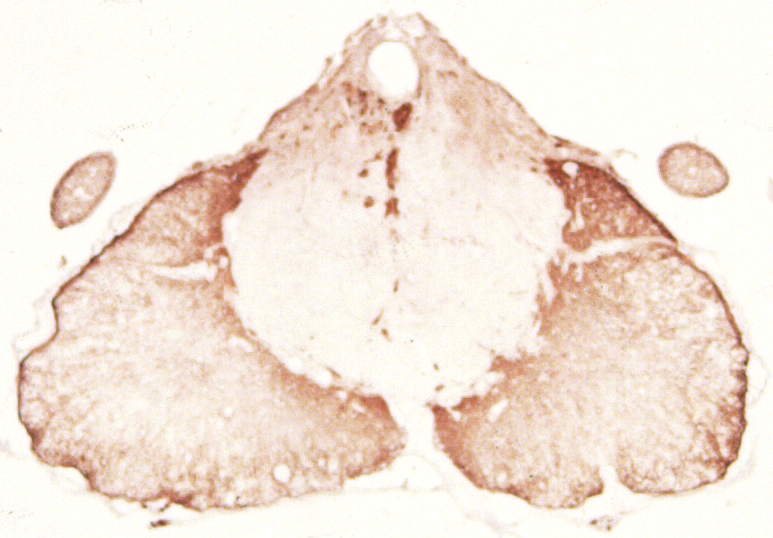Researchers find protein that improves mobility after spinal cord injuries

An international team of scientists coordinated by UAB and CIBERNED researcher Rubén López Vales has established that interleukin-37 (IL-37), a cytokine belonging to the interleukin-1 family, promotes locomotor recovery in acute spinal cord injuries.
Spinal cord injuries cause severe functional disabilities in those who sustain them, including paraplegia or tetraplegia, depending on the scale of the injury. This is due to the degeneration of the spinal pathways that carry nerve signals from the brain to the different parts of the body and vice versa, resulting in loss of mobility and sensitivity underneath the injured area. Over the past few years, different studies have shown that the inflammatory response that develops after an injury contributes to the degeneration of these pathways, thus increasing the functional deficits brought by the injury. However, clinical trials using anti-inflammatory drugs like methylprednisolone have not proven their efficacy.
This work shows for the first time that IL-37 suppresses the inflammatory response after a spinal cord injury and minimises spinal tissue degeneration and functional disabilities. Although IL-37 was identified 15 years ago, studying its function has proven difficult as it is not synthesised in mice.
The team led by Dr Rubén López - of the UAB's Department of Cell Biology, Physiology and Immunology and Institute of Neuroscience, and the Centre for Networked Biomedical Research in Neurodegenerative Diseases (CIBERNED) - used a genetically modified mouse that produces the human form of IL-37 to study the function of this protein. They have shown that if IL-37 is administered immediately after the injury the mice recover a certain degree of mobility.
This work has therefore led to the discovery of a new therapeutic strategy to treat acute spinal cord injuries, for which currently there is no effective treatment available for clinical use. This discovery could also open the door to treatments for other neurodegenerative illnesses, as the inflammatory response also plays a major role in these.
The study, published recently in the online version of the prestigious journal Proceedings of the National Academy of Sciences (PNAS), was carried out at the UAB, with collaboration from Radboud University Medical Center (the Netherlands), University of Colorado (USA) and Maximilian University of Munich (Germany), and was funded principally by Fundació La Marató, the Spanish Ministry of Economy and Competitiveness, and the International Foundation for Research in Paraplegia.
More information: Beneficial effects of IL-37 after spinal cord injury in mice, PNAS. DOI: 10.1073/pnas.1523212113 , www.pnas.org/content/early/201 … /1523212113.abstract













